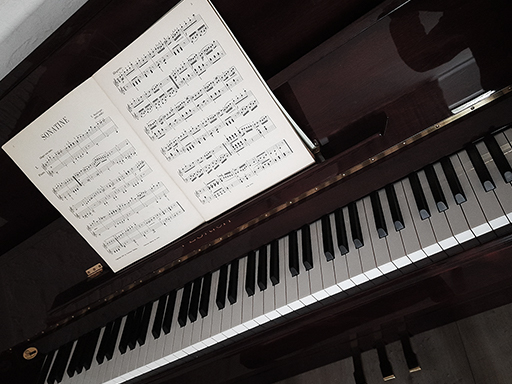Very Easy Classical Piano Music - Great Piano Pieces To Start Out With
Are you just starting out with playing the piano? Then you've probably noticed a lot of 'easy' piano pieces require a certain amount of skill on the piano already.
There are also literally hundreds of thousands of piano pieces out there and as a beginner it's hard to figure out where to start.
Solving both of these problems at once I'm creating a list of really easy but very fun to play classical piano pieces in order of difficulty.
I've accompanied each with a short explanation, link to the sheet music and a video of me playing the piece. I generally play classical music a bit slower than other piano players but that makes it a bit easier to follow along for people just starting out.

#1: Allemande in G Major - Johann Hermann Schein
A very easy piece to start out with but very beautiful nevertheless. A clear example of the baroque style. Because of the single notes and the lack of any ornamentations.
#2: Partita No. 6 in B Flat Major: Menuet in A Minor by Johann Krieger
A few double notes as chords and ornamentations make this a little bit harder, but when you do not play it too quickly it is still a great piece as a beginner. Part of a larger piece, and the last menuet in the added sheet music.
#3: Minuet in G Minor by Johann Sebastian Bach (Or Christian Pezold)
Once a very famous and simple to play piece by Johann Sebastian Bach, it is now questioned whether it was truly written by him (probably not, but there is some debate about this). Nevertheless, it is a beautiful and easy to play piece with a bassline that reminds of Johann Sebastian Bach.
#4: Sonatine in C Major I. Allegro Non Tanto by Tobias Haslinger
Beautiful romantic era piece that sounds really serious but is definitely not that difficult to play. It will take a bit longer to learn than the pieces above but is very much worth it. I've used an old book found at a second hand store for sheet music but it can also be found for free on the website of Michael Kravchuck. Click below to go straight to the sheet music for this piece.
#5: Prelude and Fugue in C Major BWV 846 I. Prelude by Johann Sebastian Bach
A great introduction to playing the piano and still a song you'll return to over time. The best description I've read a lot about this famous piano piece by bach is 'easy to play, hard to master' which is absolutely true. Even though I've far from mastered this piece yet, I hope you'll enjoy my best effort at this piece so far.
Another great thing about this track is that the preludes by Bach are an excellent introduction and support to learning music theory and chord progressions. If you choose to play this song and want to study music theory, be sure to also analyse the chord progressions!
#5: Sonatine G Major Anh 5: I. Moderato by Ludwig van Beethoven
I'll admit right away to being extremely biased, as Beethoven is my personal favourite composer of the big three, and one of my favourite classical composers in general. The downside is that he was a very adept piano player himself, so most pieces are quite difficult. This one is quite easy and still sounds like a very serious piece.
#5b: Sonatine G Major Anh 5: II. Romanza by Ludwig van Beethoven
The second part of his Sonatine in G Major feels a bit trickier to me. Both hands seem to have a bit more distinct roles to play. The line upwards next to the chords on the final page means to arpeggiate the notes. This means playing them quickly after each other instead of playing them one at a time. It is not that difficult, but something you will probably have to practice a few times before getting right if you have not been playing that long. Also see The Wikipedia Page on piano symbols. This line is explained about halfway through the page.